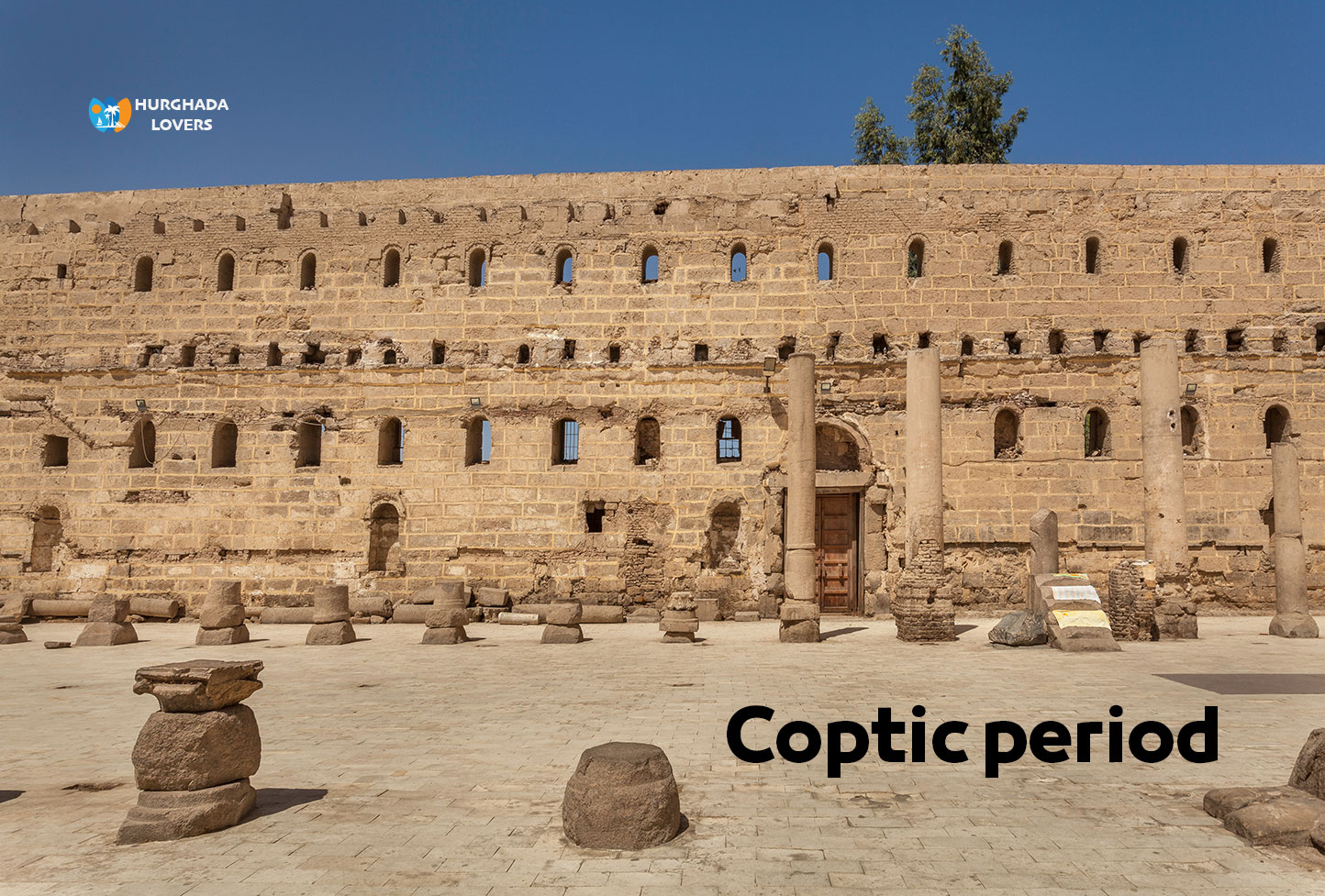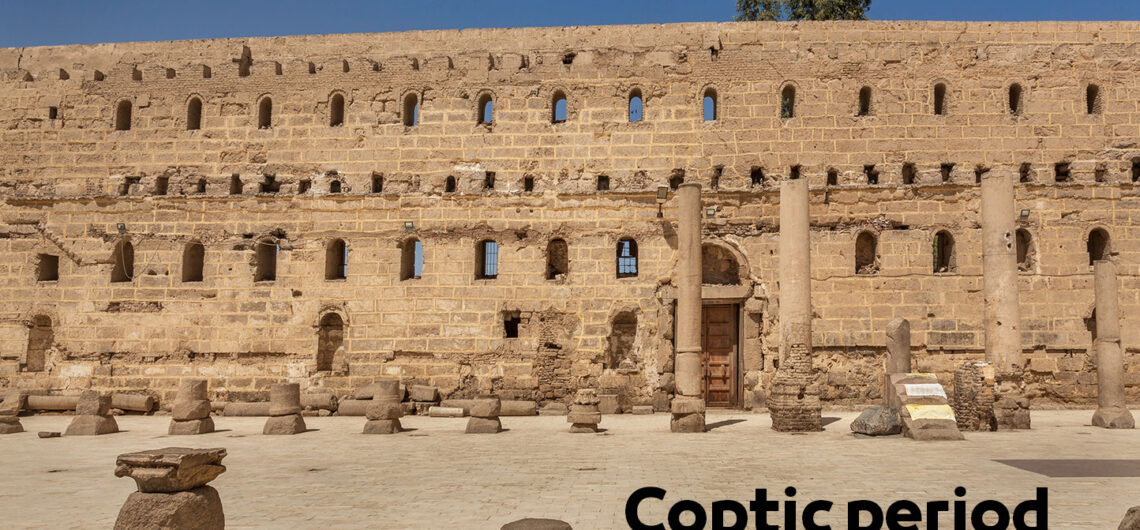Coptic period in Ancient Egypt | Facts, History How it began, Is Coptic Christianity the oldest, Are Coptic Egyptians ancient Egyptians and more about Coptic Orthodox Church of Egypt.
Facts and history, when did the ruling period begin, the most important kings and rulers of that period, achievements, the most famous symbols of Coptic art, and more secrets that you did not know before.
The Coptic Periods of Ancient Egypt is an informal designation for the morals of late Roman Egypt (dai heh) the periods of rule from the third century AD to the fourth century.
And the period of government during the era of Byzantine Egypt, that is, from the fourth century AD until the seventh.
Also, that archaeological era was determined by the periods of religious transformations in the era of Egyptian culture to the era of Coptic Christian culture, and it continued as well until the advent of the Islamic conquest of Egypt, and that was specifically in the seventh century AD.
Hurghada lovers Offer Luxury Hurghada to Pyramids Tours | El Gouna to Pyramids Tours | Makadi bay to Pyramids Tours | Sahl Hasheesh to Pyramids Tours | Soma bay to Pyramids Tours .
Coptic period
● In fact, this important era in the life of ancient Egypt began around the reigns of the third century, depending on a range of sources and uses in that period.
● It also continued until Dabke periods of marked decline in Christianity in Egypt and that was in the ninth century, or let’s say once Islam arrived in Egypt in the seventh century.
The relationship at that time with Pharaonic Egypt
● In fact, Christian or Coptic writers during the ruling periods of this era sought their attempts to discredit some of those pagan practices or practices perceived at the time as evil or satanic practices.
● They also made at that time attempts to reformulate those attempts which they could have done in the light of the most positive Christian judgment.
● We used to be a vivid example of this is the permanent continuity or makul that they used in order to use these rituals in matters of mummification in various specific monastic contexts or the other.
● It is also very important to mention or refer to it in this regard that indeed all those barbaric practices mentioned only had been tolerated, but despite that, they were largely accepted, but only to a certain extent.
● For example, when the peasants in ancient Egypt had begun to keep a number of mummies of the martyred Copts inside their homes, Athanasius of Alexandria at that time had reprimanded them because they did or did not act. as befits, or as good Christians ought to do.
How were relations with the Christian Church
● In fact, the Coptic Church or the Christians in Egypt, or that which was known as the Church of Alexandria during the periods of government in this era, had suffered from the existence of both persecution and oppression by the great intervention that occurred in that period of time.
● As the worst of these great persecutions had taken place at the beginning of the sixth century AD, and that period was during the reign of Emperor Phocas.
● This is the matter that prompted the lucky Copts or Christians at that time to stand valiantly by the rule of the Persians, who were at that time of time and persecution of the Eastern Roman Empire in a continuous and great state of constant war with them.
● However, despite all the difficulties that the Church faced, the Coptic Church did not only survive during that period, but it was on its way towards great prosperity all over Egypt.
Egyptian civilization and Byzantine and Coptic civilization:
Egyptian civilization did not tire in its interaction with the dominant civilizations, but it was influenced by the advent of the Byzantines and the emergence of Christianity before it in Egypt, but the Egyptian religion was the beginning of Christianity and Byzantine culture until the emergence of Coptic culture, which was the result of this creative interaction.
Pagan customs remained even among the first Christians of Egypt, although the upper classes of society were faithful to the rest of the Egyptian religion in the third and fourth centuries AD, the temple of Serapis in Alexandria was the first temple, and in Memphishe worshipped Esculapes above all, the ancient sage Imhotep, who became her.
He replaced available, too, and the young Osiris was removed from his place, at Abydos and Taqf, proclaiming his prophecies, and he had great appreciation.
Although Christianity opposed the multiplicity of Egyptian gods, it absorbed many of its characteristics, especially the Egyptian Trinity, which became synonymous with the early emergence of the Sahiet Trinity motivated its development and growth in Christian theological systems, and we believe that the emergence of the Christian Trinity was influenced by Egyptian influences and the proposals of Christian and Assyrian priests and clerics. moved from the ancient religion to Christianity.
The sovereignty of the Egyptian divine trinity (Osiris, Isis, Horus) paved the way for the early Christian Trinity (Father, Virgin, Jr.) and with the spread of Christianity in Egypt, the gods of the ancient religion became ghosts in the new religion, and the word “netter,” which once referred to the gods, meant in the language of Christians evil spirits.
We believe that the essence of Egyptian civilization did not flow into those who inherited it from the Arabs and Muslims inside and outside Egypt, but rather into two parallel rivers, the Greek and Roman civilizations, then the Hellenistic civilization and the Christian religion, which ascended westward through ascending sapiens from south to north.
This fact was the source of the civilized activity of the Middle European Era (through Christianity) and a source of the modern scientific activity of the modern European era (through the Hellenistic civilization that was resurrected and stimulated the emergence of the Renaissance in modern European history).
The ancient Egyptian religion has shown for more than 1,500 years, despite the political setbacks that Egypt has experienced, a little stability and has been at all ages of fall and occupation rising again, even benefiting from its enemies.
Egyptian religion even defeated its enemies in their own countries; the cult of Isis and Osiris swept the entire Roman Empire and found public and secret groups that were enthusiastic about her and preached it, despite the very strong competition from other religions of the time, but “the grandmother of Asia Minor was not appreciated.
Neither the barricade of the sun god among the Persians, nor for the Jewish God, prevails over the Egyptian gods, for many reasons. One of the first of these reasons was the mysterious reverence that one felt towards this country to ancient civilization and strange monuments.


